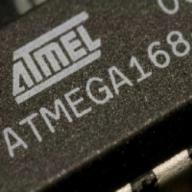1.What is the definition of salt ?
(All ionic compound ?product of metal+non metal ?product of cation+anion?Do not talk me that it is the product of acid and base!)
2.The definition of Ionic compound is (metal+non metal )or (cation+anion)?
As not all cations are metal ions,eg.ammonium,so,i am confused with this..
Chem(salt)
2013-12-08 1:55 am
回答 (3)
2013-12-08 2:53 am
✔ 最佳答案
1.In chemistry, salts are ionic compounds that can result from the neutralization reaction of an acid and a base. They are composed of related numbers of cations (positively charged ions) and anions (negative ions) so that the product is electrically neutral (without a net charge). These component ions can be inorganic such as chloride (Cl−), as well as organic such as acetate (C2H3O2−) and monatomic ions such as fluoride (F−), as well as polyatomic ions such as sulfate (SO42−).
There are several varieties of salts. Salts that hydrolyze to produce hydroxide ions when dissolved in water are basic salts and salts that hydrolyze to produce hydronium ions in water are acid salts. Neutral salts are those that are neither acid nor basic salts. Zwitterions contain an anionic centre and a cationic centre in the same molecule but are not considered to be salts. Examples include amino acids, many metabolites, peptides, and proteins.
Usually non-dissolved salts in standard temperature and pressure are in solid state of matter, but there are exceptions (see Molten salts and ionic liquids).
Molten salts and solutions containing dissolved salts (e.g., sodium chloride in water) are called electrolytes, as they are able to conduct electricity. As observed in the cytoplasm of cells, in blood, urine, plant saps and mineral waters, mixtures of many different ions in solution usually do not form defined salts after evaporation of the water. Therefore, their salt content is given for the respective ions.
(http://en.wikipedia.org/wiki/Salt_(chemistry))
2013-12-07 18:56:39 補充:
2.
In chemistry, an ionic compound is a chemical compound in which ions are held together in a lattice structure by ionic bonds. Usually, the positively charged portion consists of metal cations and the negatively charged portion is an anion or polyatomic ion.
2013-12-07 18:57:37 補充:
见意见
2013-12-07 18:57:46 補充:
Ions in ionic compounds are held together by the electrostatic forces between oppositely charged bodies. Ionic compounds have high melting and boiling points, and they are hard and very brittle.
2013-12-07 18:59:19 補充:
__________________________________________________________
The ammonium cation is a positively charged polyatomic ion with the chemical formula NH4+. It is formed by the protonation of ammonia (NH3). Ammonium is also a general name for positively charged or
2013-12-07 18:59:38 補充:
protonated substituted amines and quaternary ammonium cations (NR4+), where one or more hydrogen atoms are replaced by organic radical groups (indicated by R).
(http://en.wikipedia.org/wiki/Ammonium)
2013-12-07 18:59:44 補充:
_______________________________________________________________
以上我都睇唔明,但我可讲你知
Ionic compound is cation+anion,
Ionic compound = salt
銨是由氨分子衍生出的正離子,有金属性質,但好似唔系金属。
2013-12-13 1:57 am
當一個酸(acid)的可電離氫(ionizable hydrogen)被金屬離子(metal ion)或銨離子(ammonium ion)所置換(displace)時,形成的生成物(product)稱為鹽(salt)。
由中和反應(neutralization)所產生的是鹽 + 水。
(metal+non metal )or (cation+anion) 不一定是 鹽(salt)
Mg²⁺ + O²⁻ --> MgO 是氧化物 oxide 不是 鹽(salt)
3Mg²⁺ + 2N³⁻ --> Mg₃N₂ 是氮化物 nitride 不是 鹽(salt)
由中和反應(neutralization)所產生的是鹽 + 水。
(metal+non metal )or (cation+anion) 不一定是 鹽(salt)
Mg²⁺ + O²⁻ --> MgO 是氧化物 oxide 不是 鹽(salt)
3Mg²⁺ + 2N³⁻ --> Mg₃N₂ 是氮化物 nitride 不是 鹽(salt)
2013-12-08 4:59 am
你看不明白的話, 為甚麼要抄一大段文章, 當成是自己的"回答"呢?
剽竊文章, 毫無建樹.
2013-12-15 18:53:37 補充:
如果根據經典的(中學DSE教的) Arrhenius acid-base theory 而言, Mr. Kwok 所言甚是.
不過, 如果是根據Bronsted 甚至Lewis 的定義, 則MgO 和Mg₃N₂ 也可以是salt.
O(2-) 是OH(-) 的parent base, OH(-) 是OH2 (= H2O) 的parent base;
N(3-) 是NH(2-) 的parent base, NH(2-) 是NH2(-) 的parent base, NH2(-) 是NH3 的parent base.
你有沒有見過sodium amide, NaNH2 ?
剽竊文章, 毫無建樹.
2013-12-15 18:53:37 補充:
如果根據經典的(中學DSE教的) Arrhenius acid-base theory 而言, Mr. Kwok 所言甚是.
不過, 如果是根據Bronsted 甚至Lewis 的定義, 則MgO 和Mg₃N₂ 也可以是salt.
O(2-) 是OH(-) 的parent base, OH(-) 是OH2 (= H2O) 的parent base;
N(3-) 是NH(2-) 的parent base, NH(2-) 是NH2(-) 的parent base, NH2(-) 是NH3 的parent base.
你有沒有見過sodium amide, NaNH2 ?
收錄日期: 2021-04-13 19:50:28
原文連結 [永久失效]:
https://hk.answers.yahoo.com/question/index?qid=20131207000051KK00141



